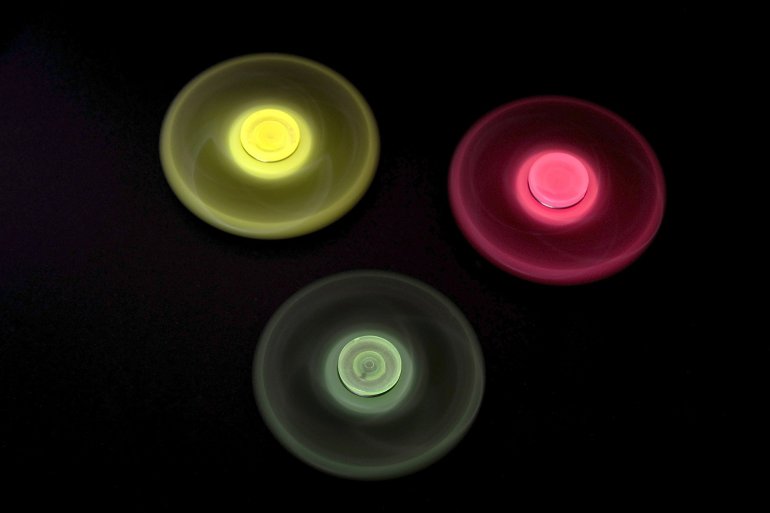When purchasing modern lighting fixtures, some important criteria must be observed to meet high requirements regarding performance, as the lighting must be bright, warm, in true colors, and free from glare and dazzling.
Here are the advice of German experts for the 5 most important criteria you should consider when purchasing light bulbs.
Energy efficiency
Light-emitting diodes (diodes), commonly known as LEDs, use less electrical energy and last longer.
"One can save 80% of energy consumption annually by using energy-saving (LED) lamps instead of old light bulbs," says Iris Follmann of the German portal Licht.de.
Several years ago it was limited to LED headlamps for home lighting, which used to radiate light in the form of points, and were designed to replace halogen lamps, but now LED lights are available for almost all ranges of use in the home, including basic lighting for living areas.
The European Union energy label on the packages shows the extent to which the lamps provide energy. According to the Öko Institute in the German capital Berlin, there are a limited number of LED lamps that meet the requirements of the highest energy saving category (A ++), and include the following category Most A + LEDs as well as high-efficiency energy-saving lamps.
Category "A" (A) includes moderate energy-saving products, and low-voltage halogen lamps come in class "B" as a maximum, and high-voltage halogen lamps occupy categories "DC and C" (C and D). Incandescent light bulbs, which are still available in the market, are in the "E" Series.
LED lamps are available for almost all ranges of use in the home (Pixabay)
Brightness
"The technology has evolved so dramatically that an LED provides up to 10 times more light than previous incandescent bulbs," says Martin Brandes, of the energy consulting team of the Federal Association of German Consumer Protection Centers.
A light bulb's brightness is measured in lumens and indicates the light flux or the amount of light emitted by the lamp.
The higher the lumen value, the brighter and brighter the lamp.
Brands added that many consumers rely on watt data, and this explains why the companies that produce labels distinguish LED lamp packages with watt values, as a 60-watt LED light looks very bright.
The degree of brightness in the room is related to the nature of use and the personal preferences of the owners of the house, and it is worth noting here the lux value, which indicates the amount of light falling on the surface.
Fulman advises using a value of 300 lux in living rooms and other ranges of the home, and for areas where visual tasks such as offices or dangerous places such as a stove or kitchen worktop are performed, it is better to be lit at 500 lux, which is This means a flow of light at a value of 500 lumens per square meter, and higher levels of light can be achieved through the use of additional lamps, such as a desk lamp or lamps built into furniture.
Display colors
Another criterion for light quality is how well the light bulbs display true environmental colors.
"The consumer knows the range of color rendering in terms of Ra or CRI," Brandes said. "100 is the same as daylight."
The current energy-saving lamps, which are used in home lighting, have a value of 80 to 90, and if one wishes to highlight a corner of the room, he can rely on industrial lighting colors instead of lighting in real colors, such as RGB-LED lamps, which By mixing red, green and blue.
LED lamps come with many color options to illuminate the corners of the house (Pixabay)
Dazzling
All common light bulbs cause one's exposure to dazzling when viewed directly, and Brandis explained that the risk of dazzling can be reduced by using a radiation angle of less than 360 degrees, in addition to which dazzling can be reduced through the use of light bulbs with hoods.
The German expert advises the need to avoid dazzling in places that require difficult visual tasks, such as the kitchen, bathroom, stairs, as well as the office room, and here lamps with a grid or lamps equipped with a reflector can be used, and if the light is reflected from the bulb on reflective surfaces, in this case it is called dazzling The reflex.
Fulman advises taking measures to reduce dazzling reflexes, such as arranging the lamps in a proper position, observing lamp intensity limits, and using extinguished surfaces.
Comfort and warmth
The color temperature is one of the critical criteria for a sense of the appropriate lighting atmosphere. The color temperature is measured in Kelvin, and the high color temperature refers to the cold blue light, and the low color temperature indicates the warm and comfortable lighting.
The value of the warm white light ranges from 2,500 to 3,000 Kelvin, Brandes said, the comfortable light colors fit perfectly into living areas, and the value of candle light, which is popular with many, is less than two thousand kelvin.
For office, study or work rooms, Fulman recommends relying on neutral white lighting with a value ranging from 3300 to 5300 Kelvin, as white daylight with a value of more than 5300 Kelvin is very discreet, and this light can have a stimulating effect in the morning when used in Bathroom or kitchen.
Since this light is not desirable at night, the lamps should be dimmable and emit a warm white light.

